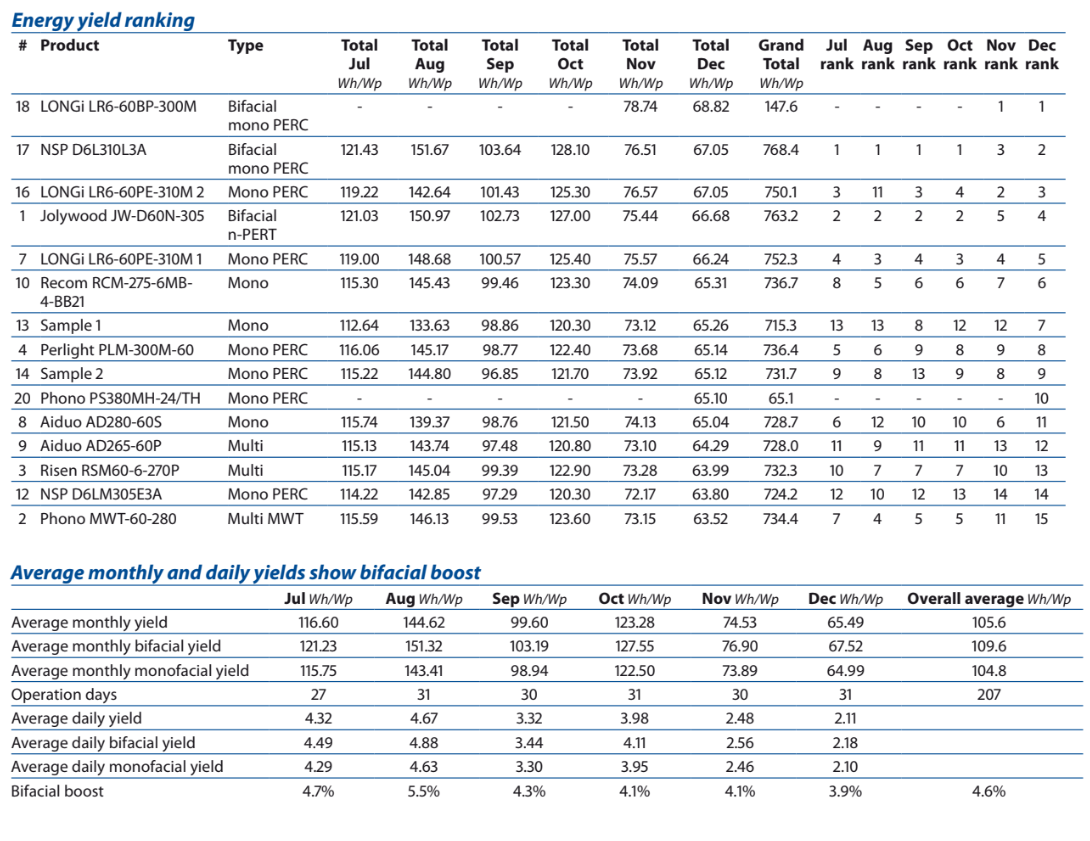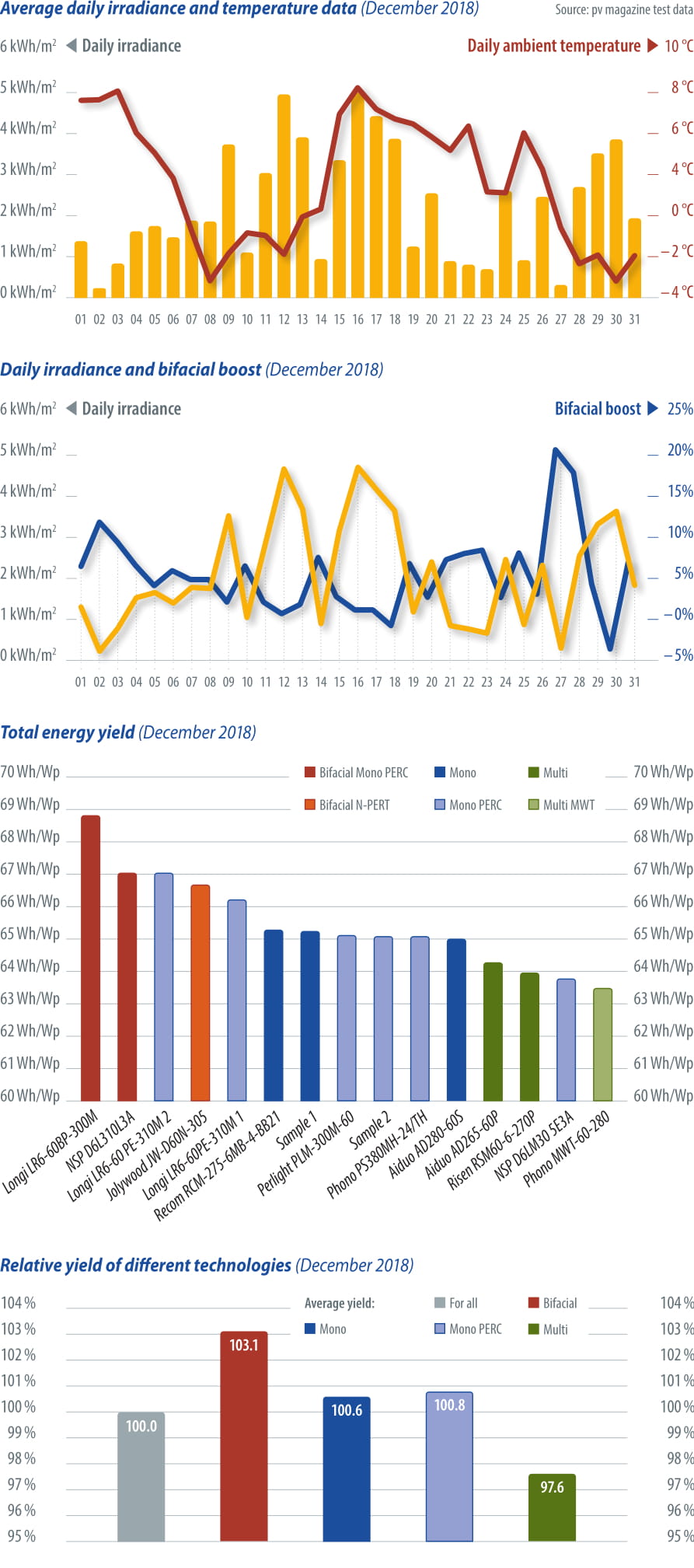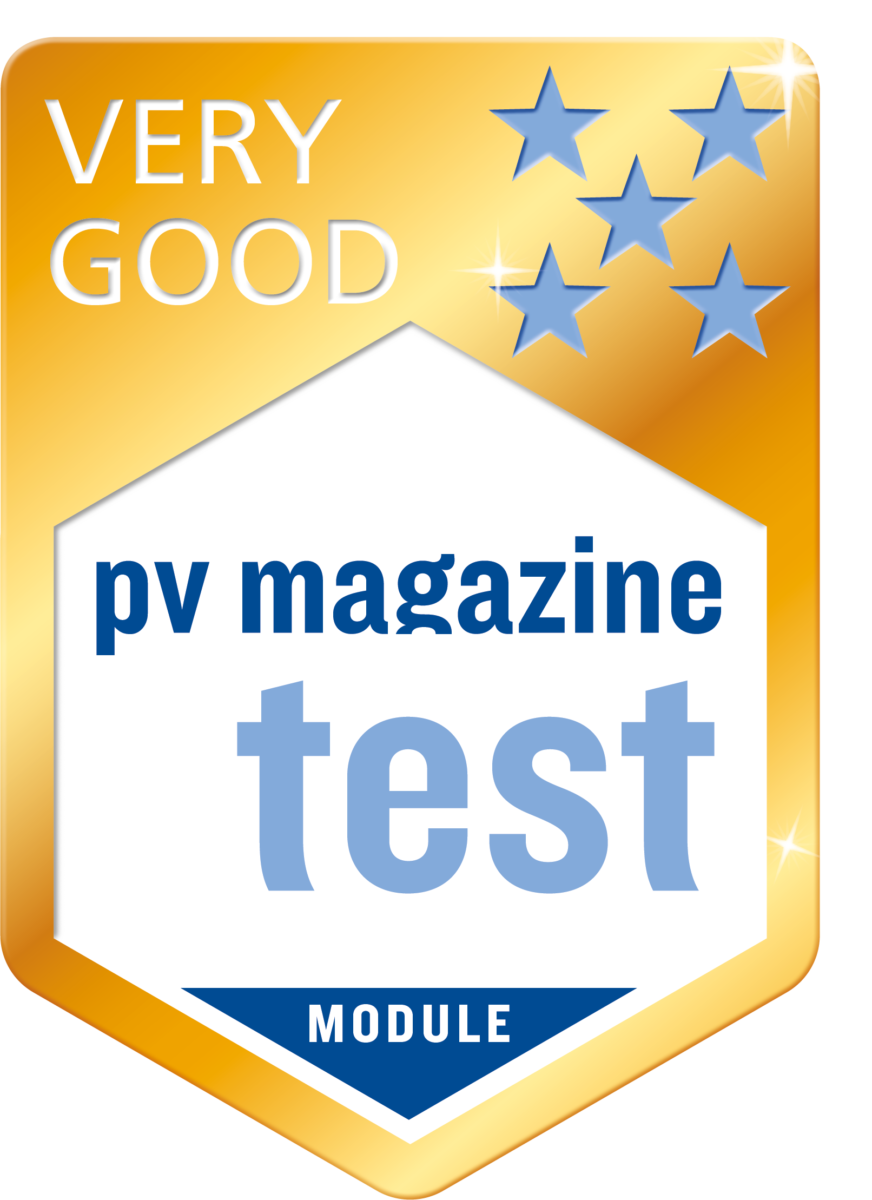The graph to the top right charts the meteo station data for December 2018. Monthly energy yield data from July to December is given in the table below. Bifacial and mono PERC products occupy the top five positions. The newly added mono PERC module from Phono (PS380MH-24/TH) is included for December. The second table shows data for the bifacial boost. The newly added Phono module was included in the analysis for December.
In general, bifacial products outperform their monofacial counterparts when the irradiance level is low. As shown in the second graph to the right, bifacial boost is inversely related to irradiance level. We performed this analysis over several time intervals and found that the correlation persists. The obvious explanation is that in low light, diffuse irradiation has a much higher impact on the rear side yield, whereas strong direct irradiation has a higher impact on the front side yield.
The graph on the bottom right shows the comparison between different technologies for December. Bifacial modules are performing above the average energy yield level, with multi c-Si PV performing under the average energy yield level.
Notes on the yield measurements
Yield is given in Wh/Wp, calculated by dividing energy produced by the module by the Pmax at standard test conditions (STC). Pmax is the maximum STC power after a process of stabilization. Results are grouped into categories, per module type.
Bifacial boost depends on many parameters: the bifaciality factor, the installation geometry, the albedo of the ground, and also the sun angle and diffuse irradiance. The ground in this case is a plastic cover simulating green grass.


This content is protected by copyright and may not be reused. If you want to cooperate with us and would like to reuse some of our content, please contact: editors@pv-magazine.com.
